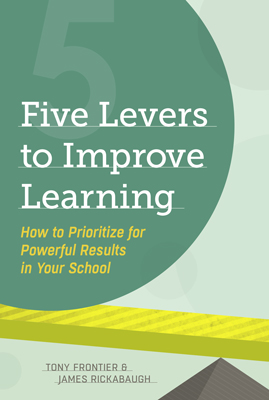“Many people die with their music still in them.”
– Oliver Wendell Holmes
As educators, it’s our job to help them find their music!

I think that the superintendent of schools should ensure that all children have access to educational opportunities despite decades of segregation and practices that have overtly and covertly separated children who learn differently.
Segregation due to race ended by law in 1954, but there have been other ‘segregationary’ practices – some well intentioned as well – like special education, exclusionary tracking, etc..
Often districts and schools practice “sifting” and “sorting” of students, these are practices that have, in general, led to disparate equity of educational opportunity across the schools, districts, states, and nation.
Regardless of evidence and research findings, many educational programs and practices still exist because school systems and leaders don’t understand how to manage change or because they are afraid to change.
When Public Law 94-142 (the special education law) was enacted in 1975, four main purposes were:
- “to assure that all children with disabilities have available to them … a free appropriate public education which emphasizes special education and related services designed to meet their unique needs
- to assure that the rights of children with disabilities and their parents … are protected
- to assist States and localities to provide for the education of all children with disabilities
- to assess and assure the effectiveness of efforts to educate all children with disabilities”
Source: Education for All Handicapped Children Act, 1975
The reality is that since 1975, many well intentioned educational programs for diverse learners ended up creating separate (but equal) “programs” and “service delivery models” for various learners.
I also think that it’s incumbent upon a superintendent to share the latest evidence, research, information, studies, etc. with his/her community to inform and improve practices.
I believe in the concept of innovation (changing for improvement).
Despite overwhelming evidence to the contrary, see Hattie, et. al, for example, updated in 2016, many “mythological” and ineffective educational practices are still in place all over the school systems because “that’s the way it’s always been done“. Doing what’s right is not always popular – but we have no excuses for not doing what’s right.
The figures below show the latest findings from Hattie’s meta-analyses about the most effective instructional practices. (I have written about Hattie‘s findings from time to time): (from the figures below, the concept of teacher credibility has an effect size of 0.90 and feedback has an effect size of 0.73, acceleration has an effect size of 0.68, for example).
Hattie’s studies have found that an effect size of 0.40 reflects the average impact of an intervention; those above 0.40 are more impactful. (click on the images below to go to the source)
Teacher Credibility Defined:
According to Hattie teacher credibility is vital to learning, and students are very perceptive about knowing which teachers can make a difference. There are four key factors of credibility: trust, competence, dynamism and immediacy. In an interview Hattie puts it like that: “If a teacher is not perceived as credible, the students just turn off.”
Examples for teacher credibility: Earn trust by showing trust towards pupils. Appear highly organised in the presentation of the subject matter. Develop a powerful style of speaking that uses few verbal hesitancies such as “OK” or “you know”. Reduce distance between teachers and students by moving or moving away from barriers (e.g., desk, podiums). Source: cie.asu.edu
Goals to mathematics are 0.40-0.49 effect size
Play programs to preterm birth weight are 0.50-0.59 effect size
Teaching strategies to acceleration are 0.60-0.69 effect size
Feedback (0.73) to Teacher credibility (0.90) complete the list

The role of superintendent of schools is often a mysterious role. I have found that many people don’t really know what a superintendent actually does on a daily basis. Some think it’s like an “uber” principalship, others think it’s like a “CEO” of a corporation, and still others really have no idea. From time to time I write about what a superintendent does.
From my employment contract it states my responsibilities and duties as superintendent:
The Superintendent shall have charge of the administration of the schools under the direction of the Board; he shall be the chief executive officer for the Board; he shall recommend the selection, retention and dismissal of, and direct and assign, teachers and other employees of the School District under his supervision; he shall organize and direct the administrative and supervisory staff; he shall make recommendations to the Board concerning the budget, building plans, location of sites, and the selection of textbooks, instructional material, and courses of study; he shall direct the keeping of all records and accounts, and aid in the making of all reports, as required by the Board; he shall recommend rules, regulations, and procedures deemed necessary for the welfare of the School District; and, in general, he shall perform all other duties incident to the office of the Superintendent as the Board may delegate to him or as required by law.
Subsequent blog posts will reflect on the duties of a superintendent who must lead to ensure that ALL students receive high quality education with structures and systems supported by evidence. It’s time to stop doing what is easy and wrong! It’s time to do what is right – even when it makes people change.
Just because our school system was designed in 1893 does not mean that we should still act like it’s 1893!




Thanks. I’d not read the ‘learning intention’ piece before, but it seems to miss the points made in Vanhove, Cheung & Slavin and Simpson (though, to be fair, it predates two of them!).
I personally find Hattie’s book and other resources like the EEF toolkit useful as ways in to the research, but they are interpreted as (and promoted as) league tables of more or less effective educational interventions. They claim that interventions with big effect sizes should be seen as areas which are generally likely to have big impacts on achievement outcomes and those with small effect sizes are seen as areas with small impacts on achievement. So policy makers (and even governments) are saying that teachers and schools should be disproportionately focussing on those areas at the top of the league tables, because that is ‘evidence based policy’. But it is not true: effect size is a measure of what Simpson calls ‘experimental clarity’ or, in Cheung and Slavin’s terms, effect sizes are highly susceptible to experimental methods. So ‘feedback’ is at the top of the league table because it is easy to do clear experiments and behavioural interventions are lower down because it is hard to do clear experiment.
For example, if I rewrote ” the concept of teacher credibility has an effect size of 0.90 and feedback has an effect size of 0.73, acceleration has an effect size of 0.68, for example” to say “experiments in teacher credibility tend to be very precise, experiments in feedback tend to be a bit less precise and experiments in acceleration are a bit less precise still” would that still be a good grounding argument for promoting teacher credibility? I am not for a moment saying that focussing on teacher credibility is a worthless policy decision – just that high effect size should not be taken as evidence that it is a good one and that higher effect size should not be taken as evidence that some other policy is a better one.
The ‘defense of Hattie’ argument is that the effect sizes are less crucial to the argument, which is something I’ve heard from other people who do mega-syntheses when they are challenged about their misuse of effect size. They use effect size as the sole basis for their argument about what is generally better and worse policy, but claim their conclusions are completely unaffected when forced to accept they have misinterpreted effect size and they were never arguing about what is better or worse after all! Those of us who have to work with teachers and help them make good policy decision deserve evidence of what will work to improve learning outcomes and not be fobbed off by evidence of where more precise experiments have been conducted.
Hi Fred,
I appreciate your additional commentary! I think that we all must critically review research, evidence, and math/stats!
Thanks for the conversation.
ML
The problem is that Hattie, and others who use the term, completely misinterpret effect size. See https://janhove.github.io/design/2015/03/16/standardised-es-revisited. This shows that effect size is an artefact of research design: if you design a very precise experiment then you get a large effect size and if you design a rather imprecise experiment, you get a small one. It is much easier to design a precise experiment for feedback than for school size. More and more people are noticing that effect size just doesn’t serve as a good measure of educational importance. Even Cheung and Slavin, who are very well respected meta-analysts, note the impact of methods on effect size (see https://tinyurl.com/h7wr6zc) and Simpson takes the whole enterprise apart in a recent paper in the Journal of Educational Policies (https://tinyurl.com/zhzbnwx) arguing that relying on these mega-syntheses is misleading.
Fred,
Thank you for reading my blog and thank you so much for taking the time to comment! I am aware of the critiques of Hattie (and his teammembers’ work) studies.
I share some “counter” points as well as this is a highly and well – debated topic:
From a staffer at Visible Learning (to whom I reached out for some clarification):
“…Those definitely come up from time to time. The good thing is that I have been there when they have come up and John always takes time to answer, which I appreciate…I do have a link to something that came out last year that we use.
http://thelearningintention.net/effective-debate-in-defense-of-john-hattie/